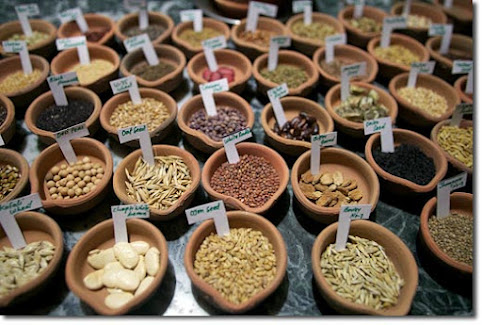Introduction:
In an era of industrial agriculture and the loss of plant diversity, the conservation and utilization of heirloom seeds have become increasingly vital. Heirloom seeds, along with the practices of seed saving and the establishment of seed banks, play a crucial role in safeguarding biodiversity, preserving cultural heritage, promoting sustainable agriculture, and ensuring food security. This essay explores the significance of heirloom seeds, the art of seed saving, and the establishment of seed banks in our modern world.
Biodiversity Conservation:
Heirloom seeds, often passed down through generations, represent a rich tapestry of genetic diversity. They are open-pollinated varieties that have been preserved and cultivated over time for their unique characteristics and adaptability to local conditions. By planting and saving heirloom seeds, gardeners and farmers contribute to the preservation of rare and endangered plant varieties, protecting biodiversity and preventing the loss of valuable genetic resources.
Cultural Heritage Preservation:
Heirloom seeds are not just repositories of genetic diversity but also carry cultural and historical significance. They represent the collective knowledge, traditions, and stories of communities that have cultivated and nurtured them for generations. By growing and saving heirloom seeds, we honor and preserve the cultural heritage embedded within these plants, ensuring that future generations can connect with their ancestral roots.
Sustainable Agriculture and Resilience:
Heirloom seeds exhibit remarkable resilience and adaptability, having evolved and thrived in diverse ecological conditions. These seeds often possess traits such as disease resistance, drought tolerance, and flavor profiles that have been lost or diminished in commercial hybrid varieties. By utilizing heirloom seeds, farmers and gardeners promote agroecological practices, reduce dependence on synthetic inputs, and build resilient food systems that can better withstand environmental challenges.
Seed Saving and Farmer Autonomy:
Seed saving is an ancient practice that empowers farmers and gardeners to reclaim control over their seed supply. By carefully selecting and saving seeds from the best-performing plants each season, growers can adapt and improve crop varieties suited to their specific needs and local environments. This practice fosters farmer autonomy, promotes self-reliance, and reduces reliance on purchasing seeds from external sources, thus mitigating the risks associated with dependency on commercial seed markets.
Seed Banks and Genetic Preservation:
Seed banks serve as repositories for the long-term conservation of plant genetic resources. They play a critical role in collecting, documenting, preserving, and sharing heirloom and rare seed varieties. Seed banks provide a safety net against catastrophic events, such as natural disasters or crop failures, and enable the retrieval and reintroduction of valuable plant traits. They also facilitate research and breeding programs focused on enhancing crop resilience and adaptation to changing environmental conditions.
Food Security and Access to Healthy Food:
The preservation of heirloom seeds and the availability of diverse crop varieties contribute to food security. Heirlooms often possess unique flavors, nutritional profiles, and culinary qualities that have been lost in mainstream commercial varieties. Their cultivation enhances dietary diversity and provides options for local and traditional cuisines. Furthermore, heirloom seeds can be shared freely, empowering communities to save and share seeds, improving access to healthy, culturally relevant food options.
Conclusion:
Heirloom seeds, seed saving, and seed banks are essential components in the movement towards sustainable agriculture, biodiversity conservation, cultural preservation, and food security. By embracing heirloom seeds and the practices of seed saving, we can preserve the past, shape the present, and secure the future of our food systems. The collective efforts of individuals, farmers, seed banks, and organizations are vital in protecting and promoting the invaluable genetic resources that heirloom seeds represent.


.jpg)
.jpg)
Comments
Post a Comment